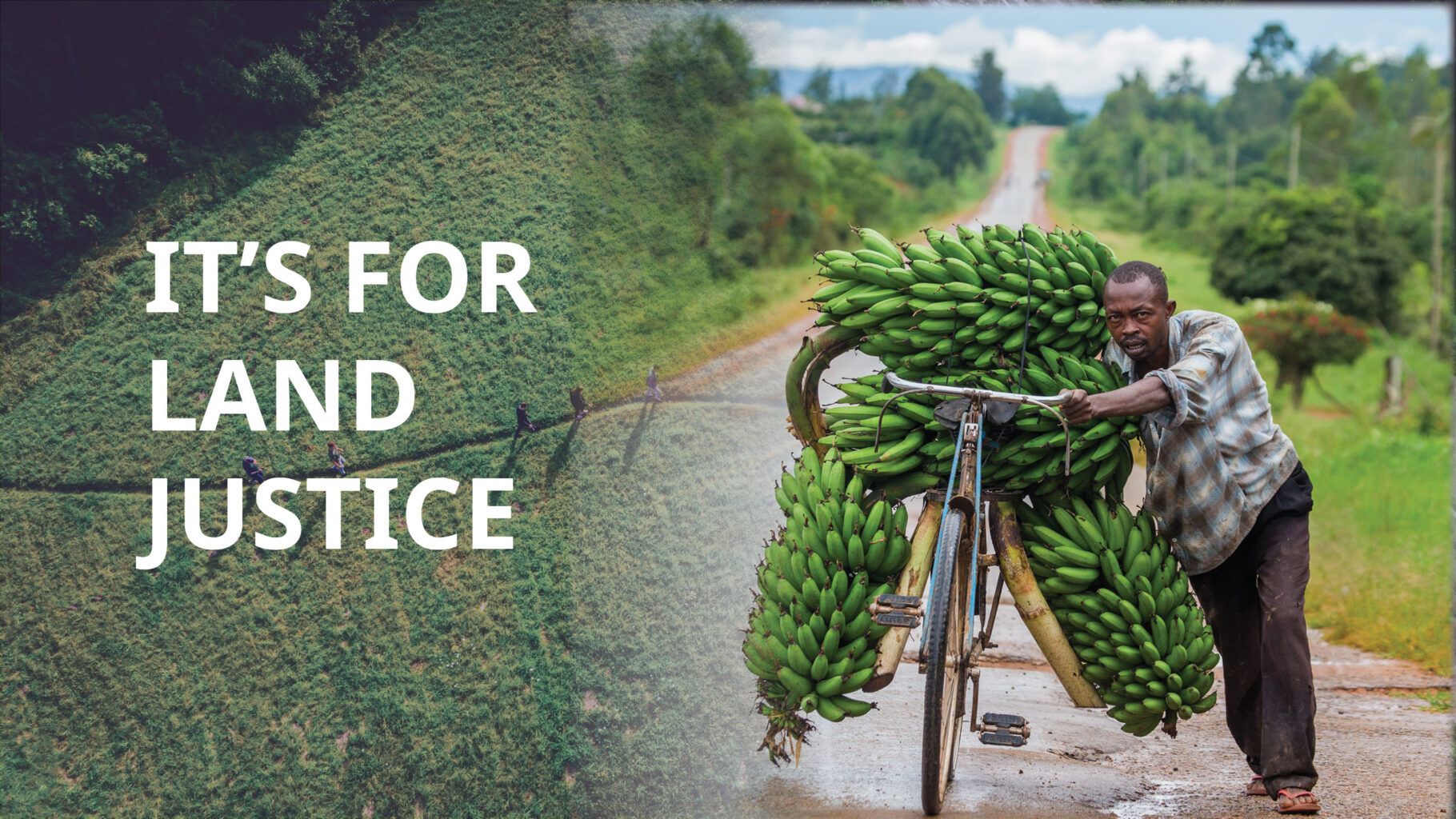I live in the peri-urban area of Kampala. The land where my ancestors had farmed is now being usurped by a local construction company. I have a wife and two children who are entirely dependent on me. This land is my safety net against the meager living I make as a carpenter. I cultivate sustenance crops on it. But if I lose it to the construction company, I will not be able to make ends meet. Is there someone who can help me? – Lennon
Land disputes are one of the most pressing justice problems affecting people worldwide. They are likely to have a cascading effect on people’s lives. This is especially true when land is connected to livelihood, as in Lennon’s case. Here, a land dispute can result in economic hardships for a family which in turn give rise to disputes within the family. Through the voice of Lennon, the newly released Land Justice page on the Justice Dashboard sheds light on many of these problems and offers solutions that increase access to justice for people.

Empirical data on land justice problems
Drawing on data gathered by HiiL during nation-wide assessments in 15 countries, the Land Justice page showcases the impact of land disputes on the lives of people in Africa, Asia, Europe, the Middle East, and Oceania. Readers can explore this empirical data in detail by applying filters that zoom in on country-specific data, sex and age disaggregated data and rural-urban data, including resolution rates, justice outcomes, and the stakeholders that people rely on for help. We invite you to dive into the data, formulate your own questions and seek answers.
Family justice problems – Land justice problems
The Justice Dashboard gets updated regularly with data on various justice issues. In the first iteration, we published data on family justice problems. A quick glance at the resolution rates of family justice problems and land justice problems indicates that there are significantly more ongoing land justice problems (49%) than family justice problems (39%). Figures on ‘completely resolved’ problems are similar with 35% of family justice problems receiving a complete resolution and just 29% of land justice problems being resolved.
Other key findings on the Land Justice page include:
- Land problems largely consist of disputes related to boundaries, access to property, use of land and land grabbing.
- On average, 7,970,000 new land justice problems take place annually in 15 countries surveyed by HiiL.
- At 13%, very few people rely on courts and lawyers to resolve land disputes.
- The most helpful justice providers and mechanisms include ‘organised procedures’ (32%) and ‘people from personal networks’ (21%).
Solutions
Apart from data, the page also reveals eight recommendations and five innovations that deliver fair and effective solutions. The recommendations are based on a thorough analysis of literature available for various types of land disputes. We identified interventions that address a problem and then selected two or three of the most effective ones. Then we evaluated each intervention by examining its pros and cons, and assessed its quality using scholarly benchmarks. Justice workers can take these recommendations as starting points while resolving a problem. The innovations have been selected based on their scalability, sustainability and ability to bring people closer to the outcomes they desire.
The outcomes that people desire while battling a land dispute have multiple dimensions. As in the case of Lennon, he wants to reclaim his land. He wants to be compensated for the loss of income he suffered in the past, a direct result of his land being grabbed. From here onwards, Lennon would like to be acknowledged as the owner of the land and have unhindered access to his property. His land also needs to be protected from potential land grabbers in the future. The recommendations and innovations proposed by HiiL can help Lennon and many others like him in achieving these objectives.
One of the leading recommendations in HiiL’s basket on land justice problems is seeking help from tribunals in the community to speedily resolve disputes related to ownership of land and use of land. This ensures that any outcomes negotiated or received by disputing parties fall within the cultural norms of that particular society as a result of which is more likely to be enforced and abided by.
An innovation that aligns with this rationale and is widely accepted is the Bataka Court. A community-based informal justice system, the Bataka Court allows elders selected by community members to intervene in land disputes as well as disputes between families and neighbours. Based in rural Uganda, the informal court system has increased access to justice for the poor by bringing courts to their doorstep and eliminating legal costs that are usually borne by justice seekers.
We invite you to engage with the data and solutions that have the potential to boost the efforts of paralegals, informal justice workers, social workers, lawyers, judges and other mediators in their goal of increasing access to justice.
Please note: Since the publication of this blog post, we have updated the personas shown on the Justice Dashboard. As a result, the names and images of the personas mentioned in this blog may differ from those currently featured on the Dashboard. To view the most up-to-date personas, please visit the Justice Dashboard.

